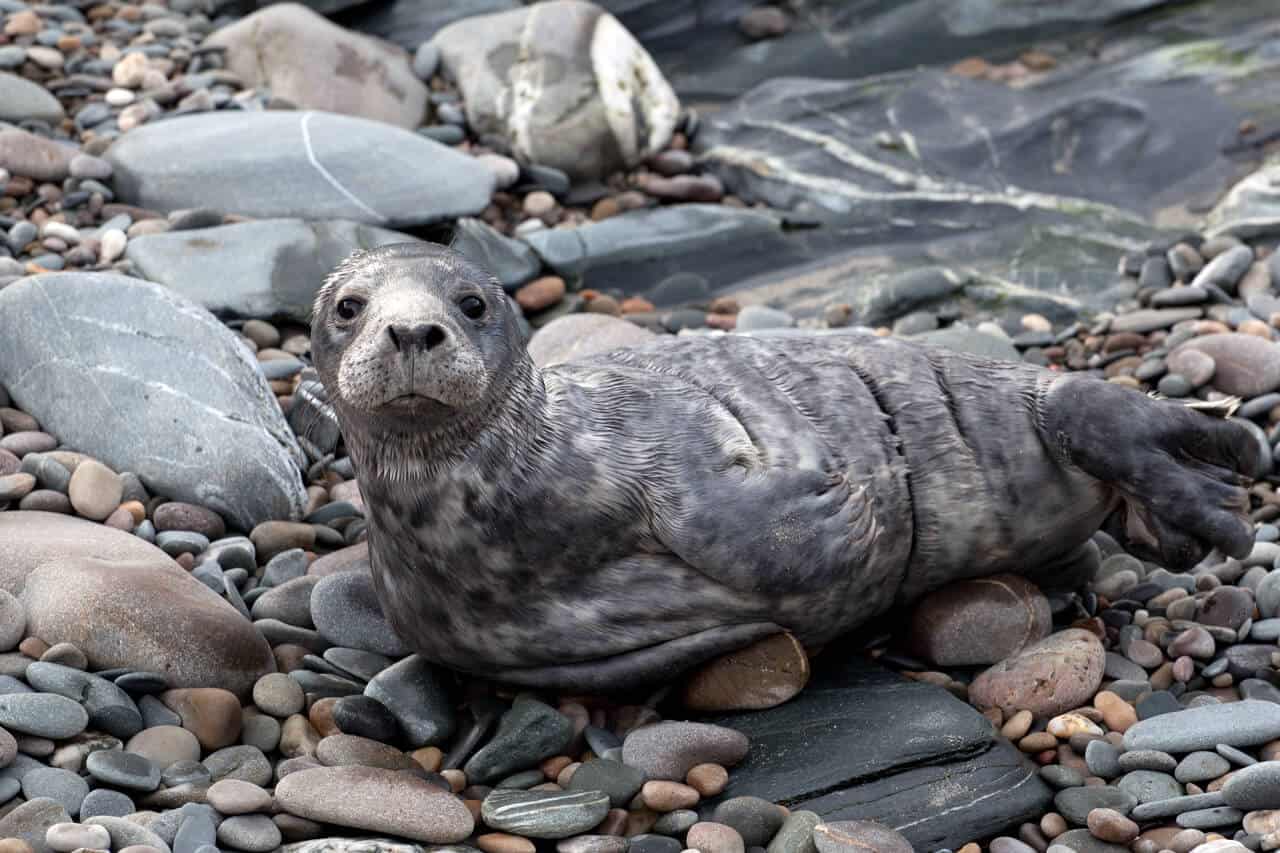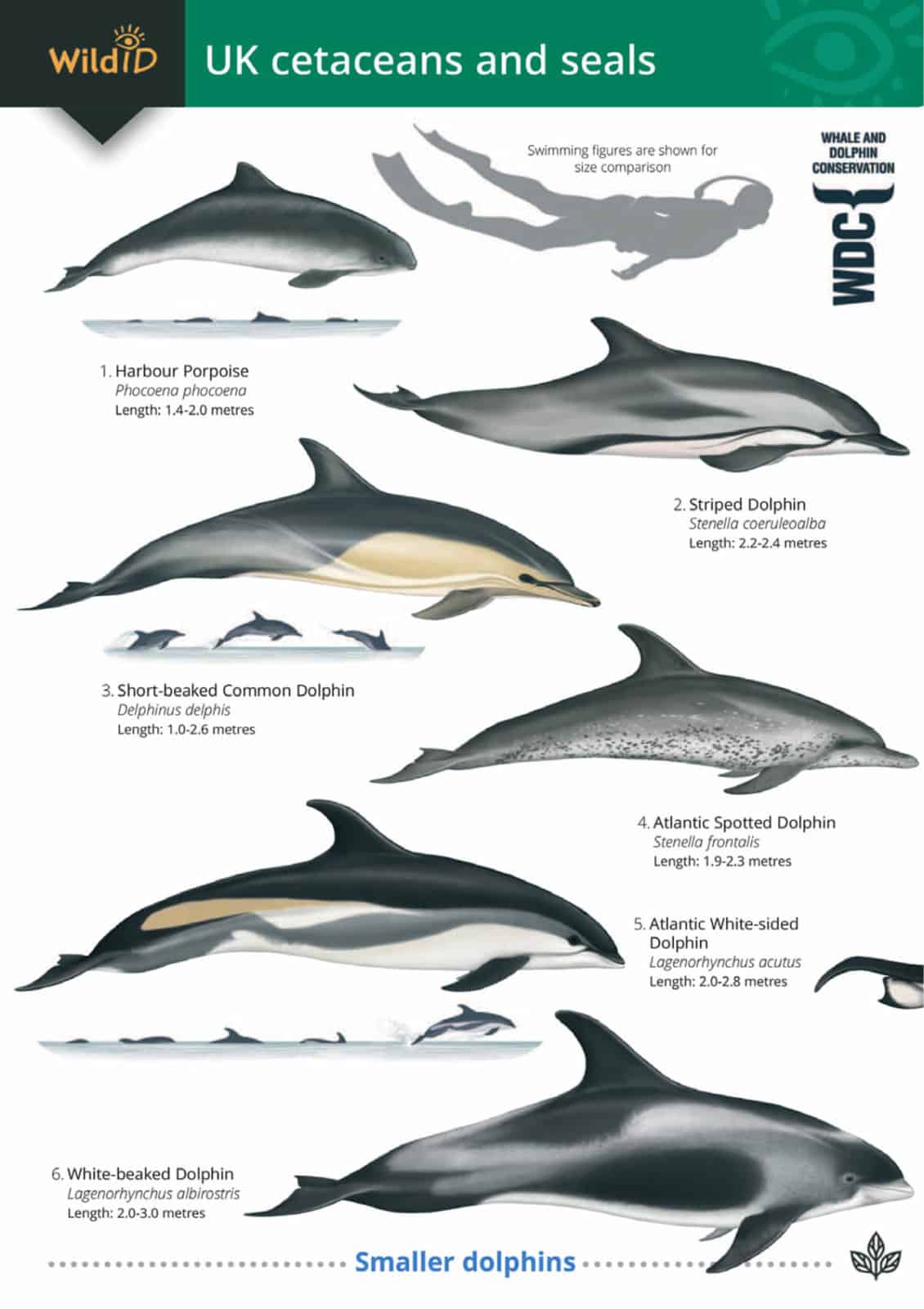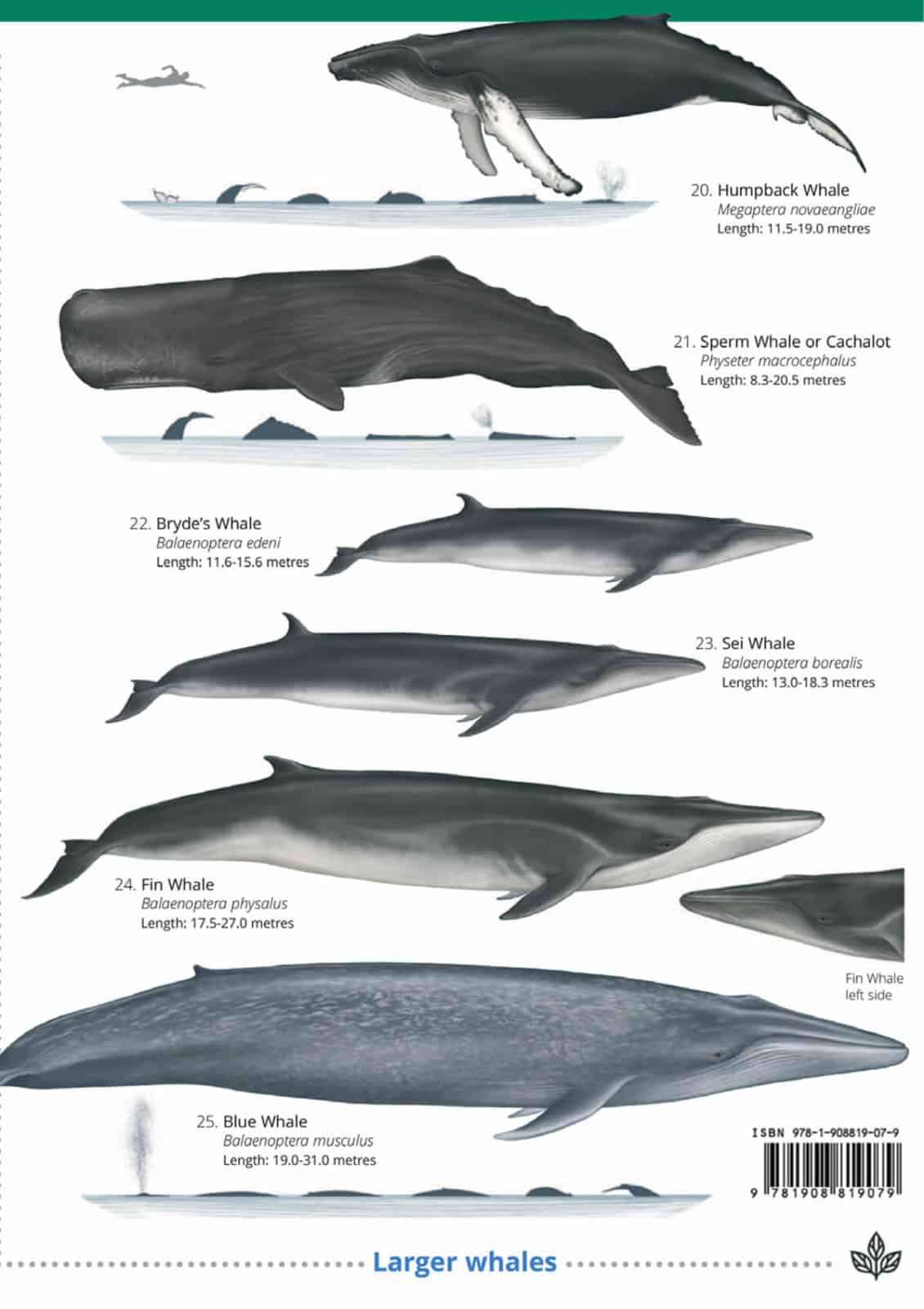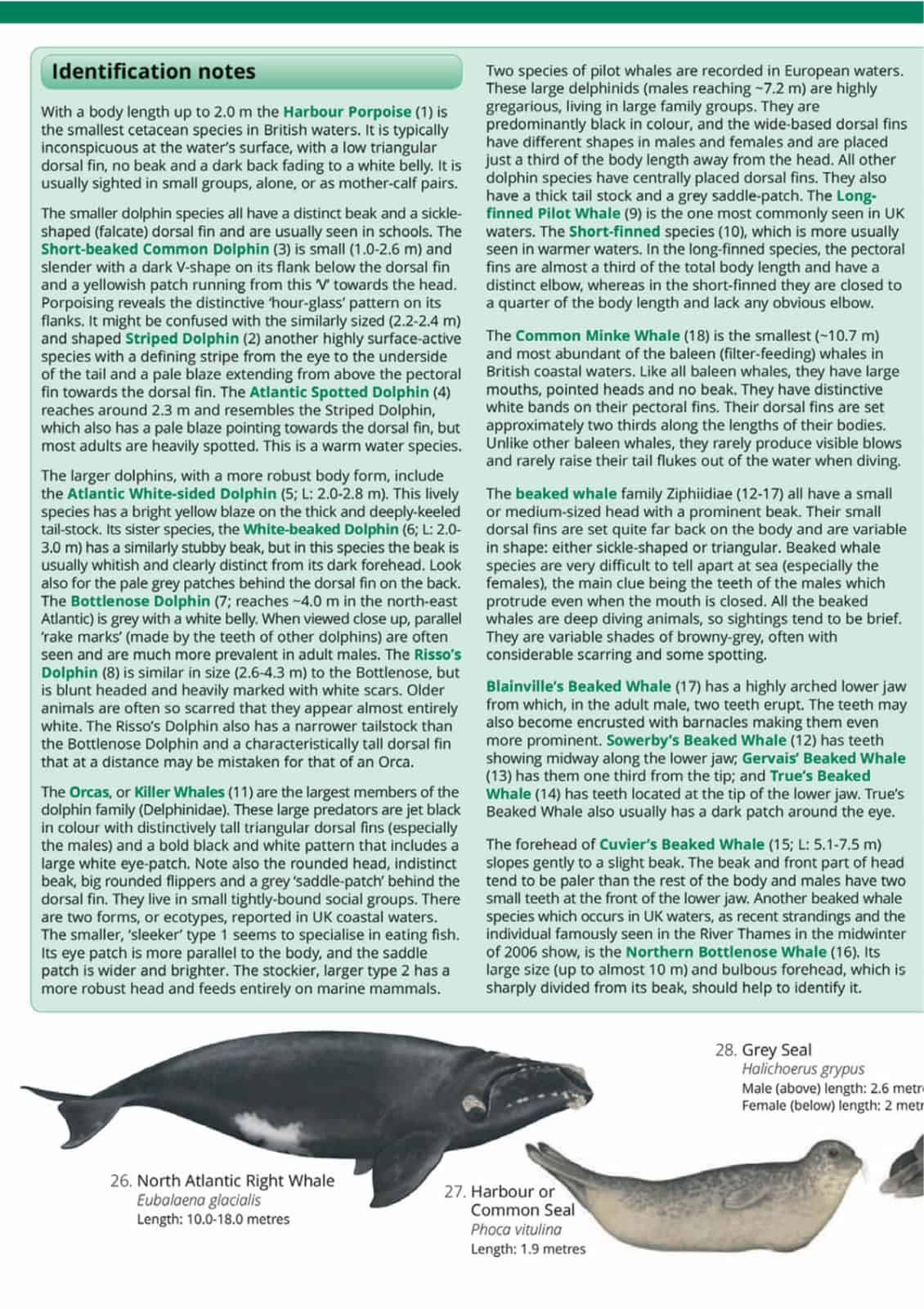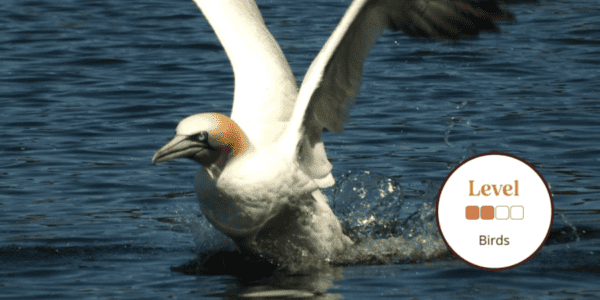Cetaceans and seals guide
The Cetaceans and seals guide features 25 species of seals, dolphins, porpoises and whales most likely to be seen in UK waters.
Whales, dolphins and porpoises make up the mammal order of cetaceans. These sea mammals have several adaptations to an entirely aquatic life. Firstly the body has a streamlined shape. Secondly the only limbs are a small pair of pectoral fins. Thirdly there is a tail fin, moved up and down to propel the animal through the water. Furthermore most cetaceans have a dorsal fin for stability. Cetaceans breathe through blow holes on the top of their heads. As well as the cetaceans, there are two species of seals breeding in the UK: the common seal and the grey seal.
At sea cetaceans are usually quite distinctive. Look out for the side-to-side motion of the tail, which often breaks the water. A group of fast moving animals leaping from the sea surface is likely to be a group of cetaceans. The group may include more than one species. Binoculars or a telescope are helpful for identifying key species-specific features, like the hour-glass shape on the flank of common dolphin. Close to shore, the most common sea mammals are the bottlenose dolphin and harbour porpoise. Sometimes also seen from land are common dolphins, Risso dolphins, common minke whales and white-beaked dolphins. Other cetaceans (particularly the larger baleen whales, the sperm whale and the beaked whales) live in deeper waters. These cetaceans are most likely to be observed from a boat.
The FSC Cetaceans and seals guide was produced in partnership with Whale and Dolphin Conservation.

